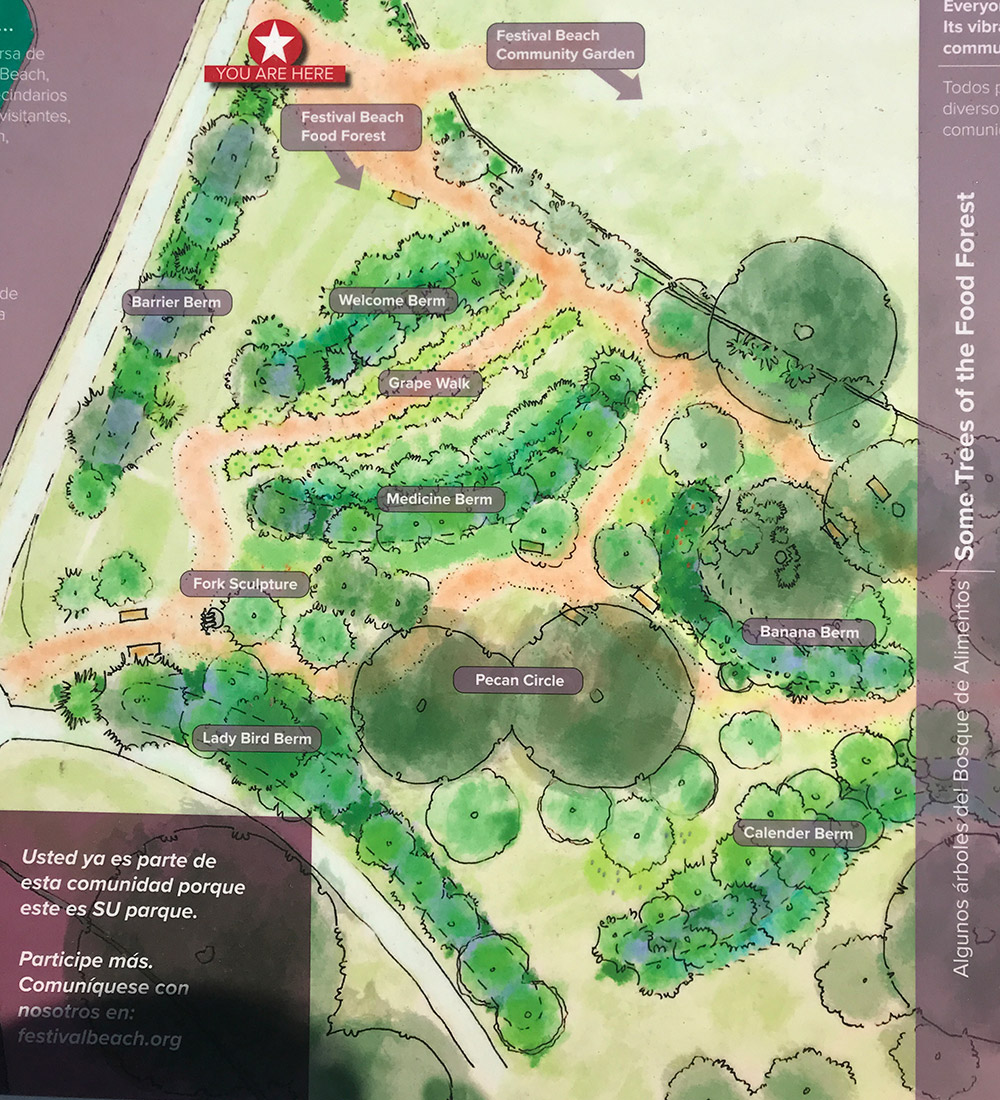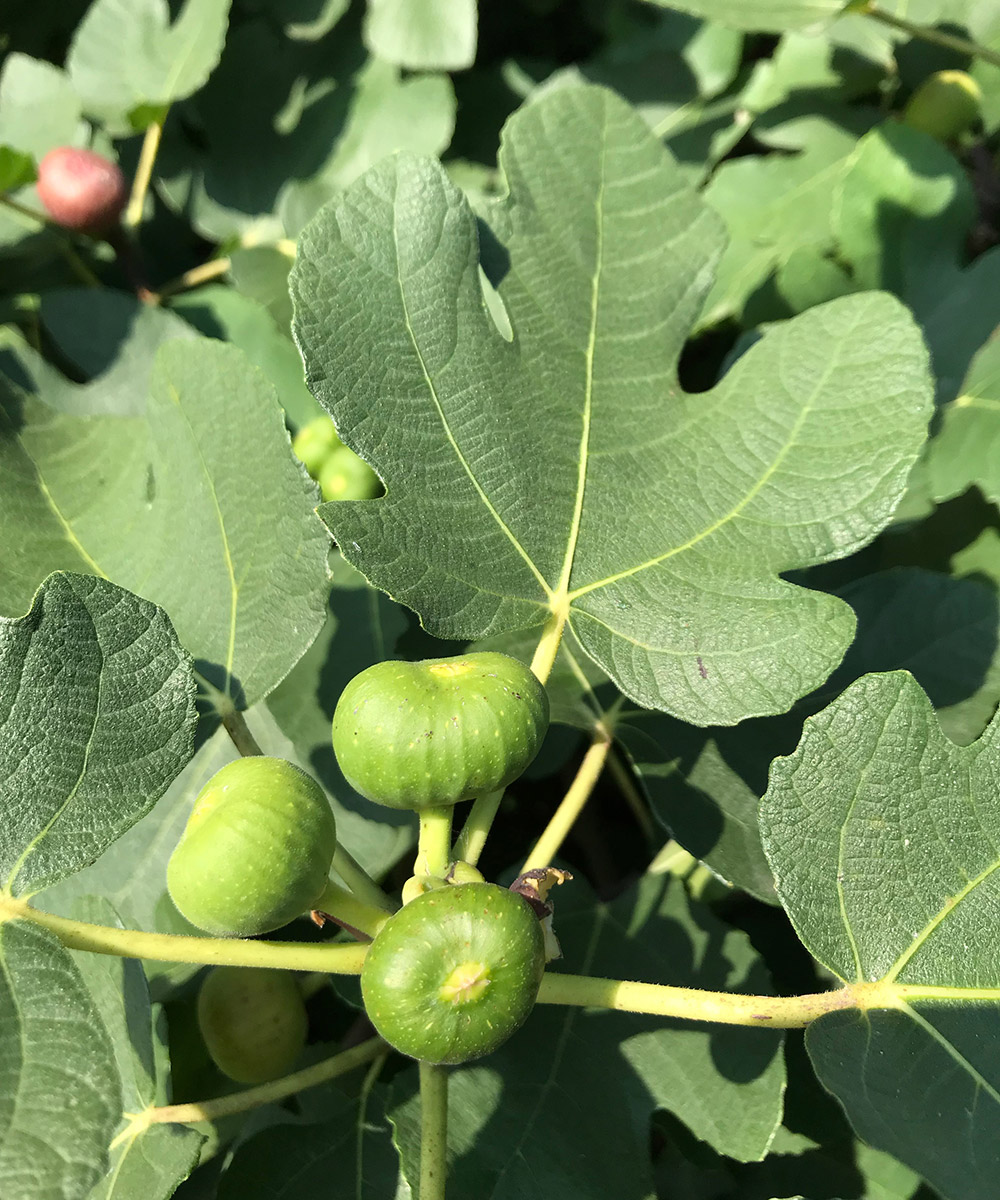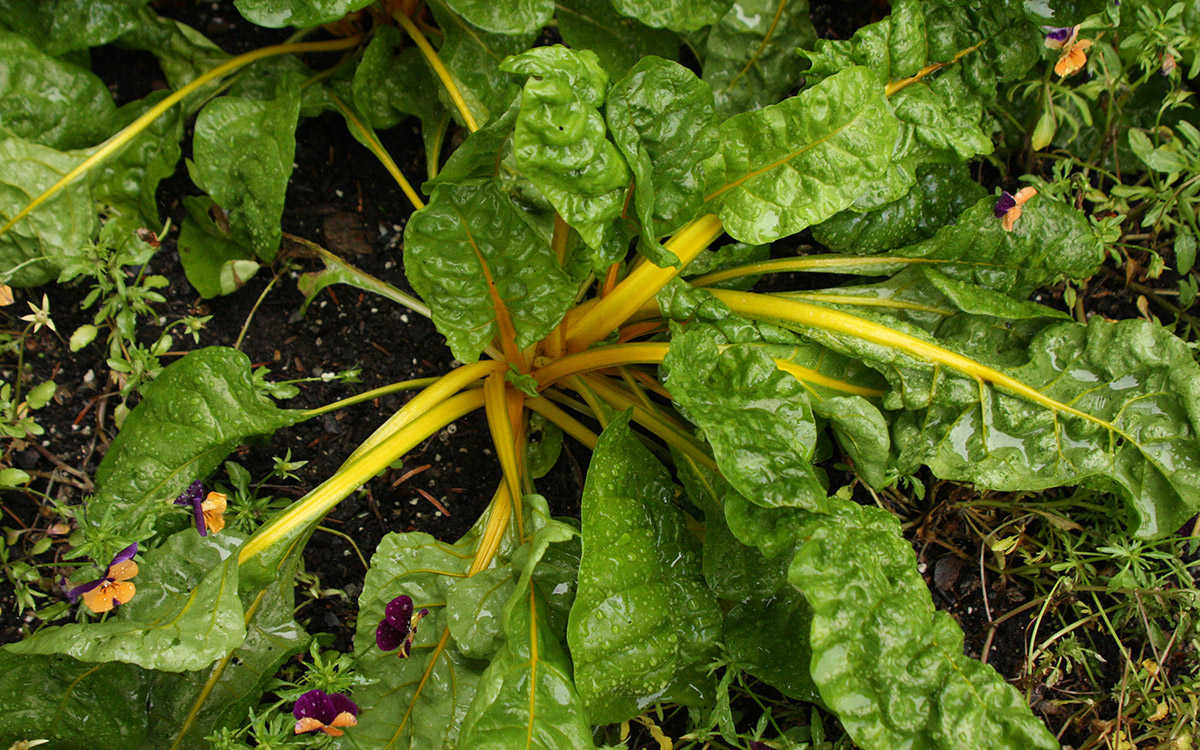
In the heart of downtown Austin, right next to the interstate that runs from Mexico to Canada, is the Festival Beach Food Forest. This small public garden is located on two-thirds of an acre of city land. It’s one of a handful of food forests in the United States. Food forests, also known as forest gardens, consist of layered plantings of edible plants along with non-edible support species.

The benefit of this type of system, when compared to a traditional annual food garden, is that food forests are very resilient once established. They focus on edible woody plants and other edible perennials that don’t need to be replanted annually, and they include species that serve as living mulch and enrich the soil over the long term. I had the pleasure of touring the Festival Beach Food Forest in 2015 when it was brand new and again in the fall of 2020 after it was well established. I believe there are a few lessons we can take away from the food forest for use in our own Southern Plains home gardens.

Multiple layers allow for the highest yields in the smallest space
Designing a garden with multiple layers enables us to fit more plants in a smaller space, and if we choose our plants carefully, it does so without creating too much competition between the layers. Some examples of good plants for every layer of a Southern Plains food forest include these:
- Overstory trees. Large nut trees such as pecan (‘Desirable’, ‘Caddo’, ‘Choctaw’)
- Understory trees. Fig (‘Celeste’, ‘Brown Turkey’), mulberry (‘Shangri-La’), loquat, plum (‘Methley’, ‘Santa Rosa’, ‘Ozark’), pomegranate
- Shrub layer. Wolfberries (aka goji berries; Malpighia glabra, Zones 8b–11), rosemary (Salvia rosmanrinus, Zones 8–11), dwarf Barbados cherry (Malpighia punicifolia ‘Nana’, Zones 9–12)
- Herbaceous layer. Bee balm (Monarda spp. and cvs., Zones 4–9), lemon balm, basil, mint, oregano, parsley, sage
- Root layer. Yarrow (Achillea spp. and cvs., Zones 3–9), sunflowers (Helianthus spp. and cvs., Zones 4–9), comfrey (Symphytum spp. and cvs., Zones 3–9), borage (Borago officinalis, annual), dandelion, radishes, artichoke, and turnip
- Ground-cover layer. Frog fruit (Phyla nodiflora, Zones 8–10), horseherb (Calyptocarpus vialis, Zones 10–11), creeping thyme (Thymus spp. and cvs., Zones 3–9)
- Vine layer. Passionflowers (Passiflora spp. and cvs., Zones 6–11), gourds, luffa

Plan for an early yield for quick gratification while waiting on longer growth cycles
Food forests are based upon the tenets of permaculture, which is a framework for ecological design that includes sustainable, regenerative gardening and farming. One of the tenets of permaculture that is emphasized in the early phases of a garden project is to plan for a yield. In other words, make sure you are planting something that will provide you with a tangible return right away. I’ve always found this to be good practice because it is easy to get overwhelmed and discouraged in the early phases of a garden project when you are putting in a lot of labor and effort and you have yet to reap the full benefits of your work. These early struggles are tempered by the joy of an early (and easy) yield.
In our region, good examples of plants that can provide us with early yields are greens (such as Swiss chard in warm weather and collards in cool weather), herbs (parsley, cilantro, and basil are simple and quick), or cut flowers (easy reliable selections such as zinnias (Zinnia elegans, annual) or cosmos (Cosmos bipinnatus, annual)). We can plant these easy annuals right away even as we await the yields from the plants that we consider to be the more long-term goals of our garden (woody plants, herbaceous perennials, bulbs, etc.).

Plan for areas of exploration and rest in your garden layout
When I visited the Festival Beach Food Forest, I took my 10-year old daughter with me. Watching her move through the garden reminded me of how much garden design can encourage or discourage exploration and can provide opportunities for reflection and rest. I watched my daughter move quickly and confidently along the path flanked by mustang grape, which felt much like a corridor. She moved more slowly in spaces that had a more diverse collection of plants (such as the layers I described above), and she stopped to rest on benches nestled among sheltering plants and overhanging trees. It’s so hot and sunny for so much of the year in the Southern Plains that it’s important to plan for sheltered, inviting spaces in our garden where we can slow down and cool off. Because the food forest is laid out on a series of berms and swales that match the natural contours of the site, the paths follow these same contours. The curving shape of these paths naturally invites exploration, with the visitor eager to see what is just around the corner and out of sight. It transforms a walk through the garden into a series of discoveries with new and interesting plants (and their edible fruits) at every turn!
—Karen Beaty is a horticulturalist at the Lady Bird Johnson Wildflower Center in Austin, Texas.
Fine Gardening Recommended Products

ARS Telescoping Long Reach Pruner
Fine Gardening receives a commission for items purchased through links on this site, including Amazon Associates and other affiliate advertising programs.

Pruning Simplified: A Step-by-Step Guide to 50 Popular Trees and Shrubs
Fine Gardening receives a commission for items purchased through links on this site, including Amazon Associates and other affiliate advertising programs.

DeWalt Variable-Speed Cordless Reciprocating Saw
Fine Gardening receives a commission for items purchased through links on this site, including Amazon Associates and other affiliate advertising programs.
- 18.31 x 6.13 x 4 inches
- 1-1/8-inch stroke length
- Variable speed trigger with 0-3000 spm



















Comments
Log in or create an account to post a comment.
Sign up Log in